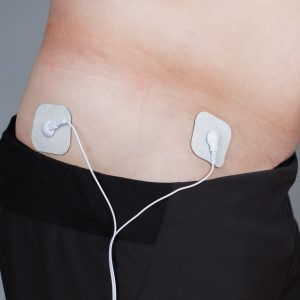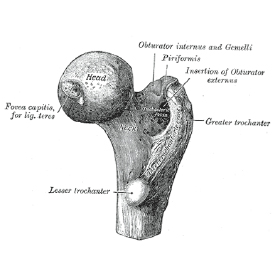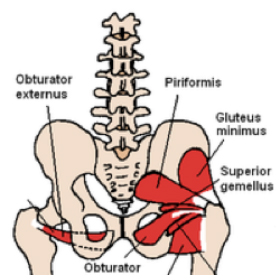
Hip Pain
Hip Conditions that may be treated:
- Hip Arthritis
- Bursitis
- Hip Fracture
- Hip Impingenment
- Snapping Hip Syndrome
Basic Treatment
Prior to treatment, acute hip pain may begin with cold/ice and chronic hip pain with either cold or heat packs. Cold should be applied with a towel between the skin and the cold pack and should be on no longer than 15-20 minutes. The heat pack also needs toweling between the pack and the skin but can stay on up to 30 minutes. In both cases the skin should be checked afterward for any blisters or signs that the skin was damaged from the cold or heat.
- Refer to the reference photo for basic options of elbow pain placement of electrodes
- Clean the skin with a wet paper towel and water to remove dead skin and other surface debris
- Do not have any lotion on the skin as it may decrease conductivity and/or create a skin irritation
- Apply the electrodes as instructed in the basic treatment procedure to area of pain using the photos noted for placement suggestions
- Turn unit on and move the cursor to the general area that you want to treat
- Press the start button and the unit does all the work. It will go through 2 phases of different currents during the total time.


This is very common especially with aging but can also happen in younger people if there has been trauma to the hip such as from a motor vehicle accident or if there is a congenital malformation of the hip from birth. Like most any arthritis, this results in inflammation, swelling and pain in the hip area. Note: some people think of the hip as the top of the pelvic bone (ileum) but it is lower down the side of the pelvis.
Hip bursitis is common and is usually felt just below the hip joint on the lateral side. It can be very painful with swelling and inflammation.
If the fracture is not too severe such as a hairline fracture, pain may be severe and this condition should be evaluated by an orthopedic surgeon as it could lead to a full blown hip fracture with stress on the bone.
Hip impingement occurs when the ball and socket of the hip joint don’t fit together properly. The restricted motion damages cartilage and can cause pain and arthritis in young adults.In some cases, the ball is too misshapen to fit properly into the socket. Sometimes, the exterior edge of the socket extends to the point that it covers too much of the ball. Hip impingement also can be caused by a combination of these two problems.
Sometimes called dancer’s hip, is a condition in which you hear a snapping sound or feel a snapping sensation in your hip when you walk, run, get up from a chair, or swing your leg around. For most people, the condition is little more than an annoyance and the only symptom is the snapping sound or sensation itself. But for dancers or athletes, snapping hip syndrome symptoms may also include pain and weakness that interfere with performance. This usually is caused from one of the hip muscles (most commonly the ilio-tibial band moving across the greater trochanter of the hip bone.
.
